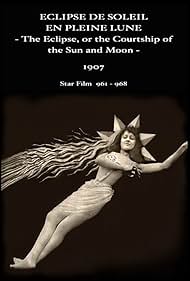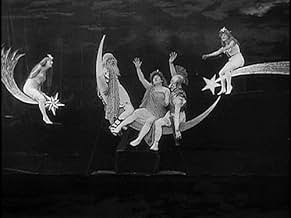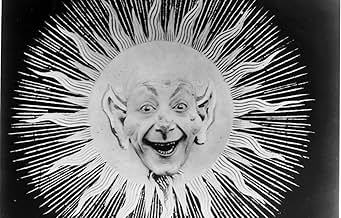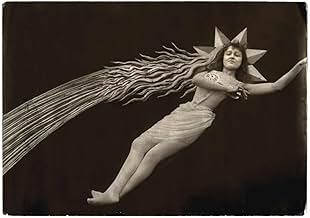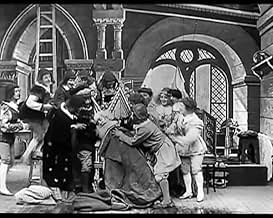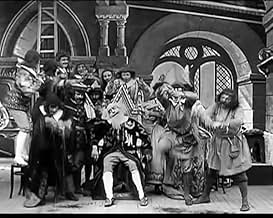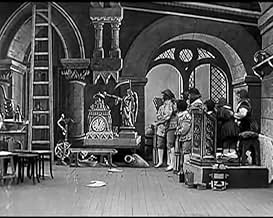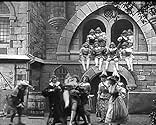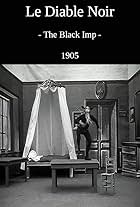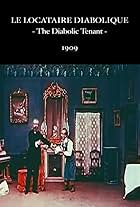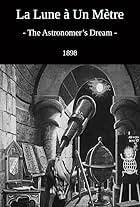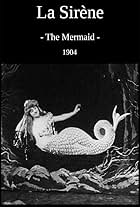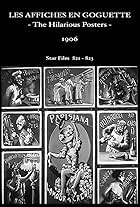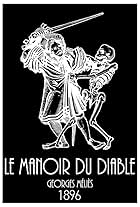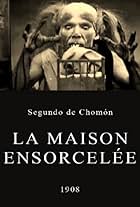Considering the brief running time of this bizarre and delightful little film, it's impressive how much detail, incident, and humor director Georges Méliès managed to pack into it. I've seen it three or four times now and catch something new every time.
The opening scene is strongly reminiscent of Méliès' most famous work, "A Trip to the Moon," made five years earlier. Once again we find ourselves in an ancient classroom of some sort, with benches arranged before a lectern, and once again the audience members march into the room like military cadets. But this time, instead of Victorian astronauts-in-training, we see a group of young astronomy students carrying telescopes across their shoulders like rifles, wearing costumes that suggest this story might be set in the 17th century. The white-bearded professor enters (once again played by Méliès himself) wearing the familiar star-bedecked robe and carrying himself with much pompous authority. This time, however, low comedy devices are employed to deflate the lecturer's pomposity: during his lecture the scribe falls asleep, a prankish student pins a paper doll to the back of his robe, etc. etc. Yet when it's time for the eclipse the students are genuinely excited, and eagerly rush to the window for a better look while the professor races upstairs to watch from his observatory.
As an earlier poster remarked, the eclipse sequence that follows really must be seen to be believed. We look on in amazement as The Sun --here depicted as an ugly, nasty-looking demon with pointed ears-- sidles up behind the coy, smooth-faced Moon and proceeds to inspire an unmistakable orgasm, as The Moon's facial expressions convey the full range of erotic pleasure. To call this "suggestive" doesn't do it justice: this is a sex scene without the sex, no two ways about it. One thing I still can't determine after several viewings is whether the actor playing The Moon is a mannish-looking woman or an effeminate man. Usually in art and literature the moon is portrayed as feminine (our "man in the moon" notwithstanding), but whichever the case, Miss Luna certainly looks ready for a cigarette and a nap afterward.
Méliès follows his coup-de-cinema with a charming sequence in which the planets Venus, Mars, Saturn, etc., are also portrayed as personified characters (ones that behave more decorously than the Sun and Moon, mind you), after which we're treated to a meteor shower. This brings us back to the elderly professor, who has become so excited by the astronomical display that he tumbles out the observatory window into a rain barrel. The film concludes with a slapstick coda as the old man's students and assistants awkwardly attempt to dry him with blankets.
The conventional wisdom concerning Georges Méliès is that his best days were already past by 1905 or thereabouts and that his subsequent films were dull and repetitive, but this one at any rate is far from dull. In fact I'd rank "The Eclipse" with the man's most delightful films, and recommend it to anyone interested in early cinema. Happily, the print recently restored for the Kino series 'The Movies Begin' is clear and sharp, and in far better shape over all than most of the director's other surviving works.
